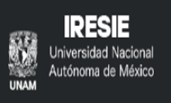Dispute Political Projects
the importance of Integrated Education and Polytechnic as a counterpoint to high school count-Reform
DOI:
https://doi.org/10.35699/2238-037X.2021.35854Keywords:
Education, High School Reform, Entrepreneurs, Integrated/polytechnic educationAbstract
This research aims to analyze the political projects in dispute, which started since the discussion of education in the 1988 Constitution and the 1996 Laws of Directives and Bases for National Education, contrasting two educational proposals: one in favor of an Integrated and Polytechnic Education and, the other, focused on the lightening of education and on the preparation of manpower for the labor market. In this sense, these two political projects continued to appear in discussions, plans and educational laws in order to be put into effect. Understanding that this is a terrain of victories and defeats in favor of Integrated and Polytechnic Education, we intend to point out its relevance for a quality Basic Education, even if currently occurs the imposition of an education model, approved through the Provisional Measure (n. 746/2016), converted into the Bill no 34/2016, which led to the approval of the Counter Reform of High School the following year, by Law n. 13.415/2017, which promoted changes in the LDB, establishing a change in the structure of this level of education. In addition to these devices, the National Common Curricular Base for Secondary Education (BNCC EM) was sanctioned by MEC Ordinance N. 1,348, dated December 14, 2018, and there was an update of the National Curricular Guidelines for Secondary Education (DCN EM), through MEC Ordinance No. 1,210, dated November 21, 2018, which configure what the Ministry of Education has called the "New High School."We also tried to show how and why the Counter Reform of High School is detrimental to the proposal of a universal and quality basic education, which prevents the practice of Integrated and Polytechnic Education. This Counter Reform is guided by the principles and objectives contained in the Common National Curricular Base and should be implemented in public schools throughout the country in collaboration between the education systems and the institutions and school networks, public and private, of Basic Education. Finally, we aim to unveil the forces that act in favor of this counter-reform and its proposals for this level of education, considering the analysis of the flexible curriculum and the training itineraries provided by the BNCC













